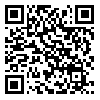BibTeX | RIS | EndNote | Medlars | ProCite | Reference Manager | RefWorks
Send citation to:
URL: http://jwsti.iut.ac.ir/article-1-94-en.html
Studies on welding process of Aluminium weldments shows that post-weld residual stress and deformation are influential on structure efficiency and there are different variable which affect these stresses and deformation. In this study the effect of geometrical variables and welding sequence on residual stresses and deformation in Aluminium H321 have investigated by the finite element software Ansys. Thermo elastic-plastic model was verified by metallography experiment and measurement of post-weld deformation afterward, weld leg, penetration depth and welding sequence were optimized to minimize the distortion. It was concluded that weld-volume increase post-weld distortion and it can be minimize by choosing an appropriate weld sequence
| Rights and permissions | |
 |
This work is licensed under a Creative Commons Attribution-NonCommercial 4.0 International License. |





